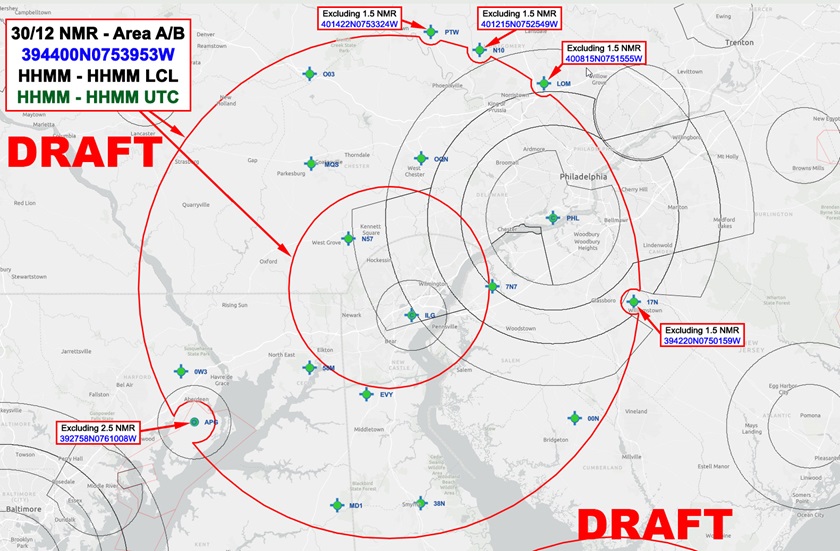Presidential flight restrictions updated
Biden visits to Delaware will trigger restrictions
Future visits to his home state by President Joe Biden will prompt temporary flight restrictions in Delaware centered on two possible destinations.

The January 20 inauguration of the forty-sixth president took place under heavily defended airspace, with thousands of National Guard members deployed in Washington, D.C., to protect the event. Former President Donald Trump returned to Florida, where flight restrictions were in effect for his arrival in Palm Beach.
The FAA provided AOPA with an advance look at what the new presidential TFRs will look like when Biden returns to Delaware. Two such presidential TFRs have been drafted, one centered on Wilmington, and another around Rehoboth Beach. Operations at several airports will be affected by both of the Delaware-centered TFRs, when active, though the Rehoboth TFR would not limit access to any public-use airports, all of which are outside of the 10-nm inner ring of that TFR. As is typically the case with presidential TFRs, certain operations between the inner and outer rings will be curtailed, but airports within this zone will remain accessible.
The Wilmington TFR, when active, will have a 12-nm inner ring that precludes most operations at two airports: New Garden Airport in Toughkenamon, Pennsylvania, and New Castle Airport in Wilmington.
The FAA graphic depicting the future Wilmington TFR indicates cutouts that will exclude five airports located along the outer edge of the 30-nm ring. There are nine other public-use airports within this 30-nm outer ring where certain activities will be prohibited when the TFR is in effect, though these airports will remain accessible to general aviation.
Two public-use airports have been excluded from the outer ring of the draft TFR covering Rehoboth Beach, though six others would be subject to any restrictions imposed on operations between 10 nm and 30 nm from the center of that TFR.
It is possible that there will be gateway airports made available for access to New Garden Airport and New Castle Airport while the Wilmington TFR is in effect. However, the Transportation Security Administration has not yet provided any information on whether this will happen or which airports might be selected to serve as gateways.
“We are grateful that the FAA has worked with the U.S. Secret Service to minimize the impact of these TFRs as much as possible,” McClay said. “That being said, AOPA will continue to advocate for a balanced approach to presidential protection, including the adoption of a Maryland Three-type structure for these lengthy TFRs, that preserves access to airports and airspace to the extent possible. TFRs historically come with economic costs as well as inconvenience.”



